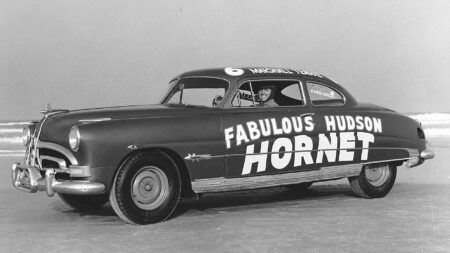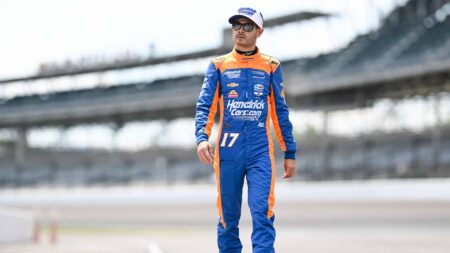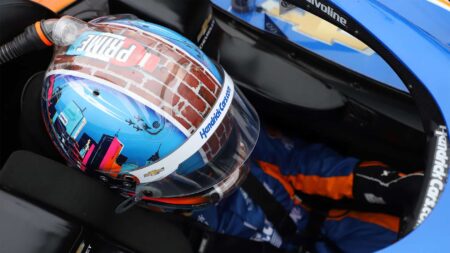
The real-life Hudson Hornet: story of a NASCAR icon
The massively successful Cars Disney film made Doc Hudson popular with fans young and old – James Elson tells the story behind the Hudson Hornet NASCAR it was based on
Paul Menard scored a memorable first NASCAR Sprint Cup victory in last Sunday’s Brickyard 400 at the Indianapolis Motor Speedway. Menard won the race by staying on track when most of the leaders stopped for fuel under the last yellow flag. The move gave Menard the lead and he stretched his fuel to the maximum, comfortably holding off a closing charge from Jeff Gordon.

Menard, 30, has been racing Cup cars regularly since 2007 and Indy was his 167th Sprint Cup start. He joined Richard Childress’s three-car Chevrolet team this year and has been a contender in many recent races. He is the son of John Menard, who ran a team in the Indianapolis 500 for many years and is the owner of the Wisconsin-based Menards chain of home improvement stores.
In recent years many NASCAR races, Indianapolis included, have struggled with declining crowds. More than a few loyal NASCAR fans have lost their jobs and the poor state of the economy means many race fans can’t afford to indulge themselves. NASCAR has raced at Indianapolis since 1994 and the track’s giant grandstands were close to full through the race’s early years. But a slow and steady decline in ticket sales soon beset the mid-summer weekend and following the 2008 race, which was dominated by tyre failures and yellow flags, ticket sales plummeted in 2009 and ’10.
At most NASCAR tracks a seat in the grandstands affords a view of the entire track, but the Speedway is a different animal. While the majority of NASCAR tracks are literally oval-shaped, the Speedway is a four-cornered rectangle. Also unlike your typical NASCAR oval the Speedway’s turns are barely banked at a shallow nine degrees. This means passing is much more difficult at the Speedway and side-by-side racing is all but impossible. So for NASCAR at least, the track tends to produce unexciting racing.

It’s also impossible to see the entire track regardless of where you’re seated in the grandstands because the control tower, the infield grandstands and other buildings obstruct the view. The result is that many fans were disappointed with that they saw at Indianapolis. The Speedway’s management also believes customers were lost to NASCAR races at new tracks in the Midwest like the Chicagoland and Kansas Speedways.
Next year the IMS and NASCAR hope to stem the decline in ticket sales by turning the Brickyard 400 weekend into a three-race feast, adding a Grand-Am sports car race on the road circuit and a second-division Nationwide race on Saturday afternoon.

In recent years the Nationwide series (formerly known as the Busch series) ran on Saturday night at O’Reilly Raceway Park (formerly known as Indianapolis Raceway Park), a 0.686-mile oval located 10 miles west of the Indianapolis Motor Speedway. In fact, NASCAR’s second division has raced at Raceway Park for 30 years, going back to 1982. The race has enjoyed a healthy fan following so the move to the big Speedway will be a loss for O’Reilly Raceway Park.
Will the slate of multiple races help revive the flagging Brickyard 400? If it doesn’t, both NASCAR and the Speedway will be scratching their heads to find ways to fill those empty seats.

The massively successful Cars Disney film made Doc Hudson popular with fans young and old – James Elson tells the story behind the Hudson Hornet NASCAR it was based on

NASCAR star Kyle Larson is attempting 'The Double' this Sunday, driving the Indianapolis 500 and Coca-Cola 600 on the same day – but several factors could stand in his way

'The Double' is a challenge like no other in motor sport – we look at the brave racers who've taken on the Indianapolis 500 and Coca-Cola 600 on the same day

NASCAR has aimed big with its new Drive to Survive Netflix imitator Full Speed: can the docudrama match its lofty ambitions?